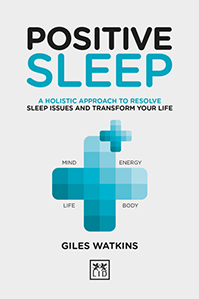Boyden's Nick Robeson shares his top recommendations to accelerate greater board diversity.

Nearly 95 percent of directors agree that diversity brings unique perspectives to the boardroom, while 84 percent believe it enhances board performance, according to PWC’s 2018 Annual Corporate Directors Survey.
Unquestionably, board diversity matters, but concentrating on only one form of diversity isn’t enough. Social diversity: gender, race/ethnicity and age, as well as professional diversity, are both critical for increasing the variety of perspectives represented on the board.
A functioning board will act as a platform for a range of different voices in order to ensure business decisions made as a collective have been fairly discussed, evaluated and determined.
An egalitarian board is likely to reach higher diversity than a hierarchical one. When board members share a view of equality, it positively influences the variety and recruitment of board members. Unconscious bias and nepotism can too easily influence a board’s initial hires.
Surveys show that diversity is a long way from being achieved by many, but it is evolving in a positive direction.
There is no silver bullet to change existing boards but these are some ideas that may help in the short-term.
1. Expand the size of the board.
The low turnover of board seats is a significant obstacle to creating greater board diversity. With the average retiring age of 72 years, expanding your board is a smart way to diversify without waiting for retirement.
Consider opening up 3-5 new positions to fill those with socially and professionally diverse people from your current board line up.
2. Understand that one isn’t enough.
Boards, most of which have nine to 13 members, can’t just add one woman and expect real change in the way they operate. Moreover, women do not want to feel as though they are a ‘token’ for your board to feel diversified. The candidate’s skill-set and professional expertise, of course, should always be the focal point for their recruitment into the board.
Striving towards a 50/50 gender split of board members is a great but simplistic view of diversity. The same rule applies to other underrepresented groups.
3. Request a 50/50 candidate pool
Achieving diversity comes from all parties involved in a hire. Whether it is the recruite for a given position or the company making the hire, candidates from all genders and backgrounds must be considered in order to make diversity the norm. From the recruiting perspective, we should be submitting as diverse a candidate pool as possible.
Companies should be requesting this, and Executive Search firms should also recommend this as standard. Meeting diversity targets shouldn’t feel like ticking a checkbox. It should be an inherent and natural part of the recruitment process - contributed to and accountable by all involved.
4. Rethink board member criteria
To recruit more diverse candidates, boards have had to cast a wider net and focus on skills and experience rather than titles. Many boards are also broadening the range of professional backgrounds considered for board member positions, allowing them to attract more socially diverse directors who bring, consider it “diversity of thought.”
Diversity is easier to achieve when boards avoid filling open seats with people already in their personal and professional networks. The opportunity is around how boards form and how you fill vacancies. It might be unconscious bias.
In conclusion, many positive changes are happening on boards all around the world. We are seeing an increase in female CEOs and leadership is in a different place to even just a decade ago.
Being mindful of diversity is essential for everyone, especially for Executive Search firms who hold power in who they present to clients.
What are your thoughts? Do you have a diverse board? How did you reach that point? Let me know. And, as always if you’d like to continue this conversation with me, please get in touch.

A very fresh look at this subject is the book Positive Sleep written by Giles Watkins
Giles is the author of Positive Sleep. A book which explores the problem through his sleep struggles and provides guidance for readers using techniques and personal tips that transformed his life and helped him to sleep better.
Along the way, he explains the importance and function of sleep and how lack of sleep typically affects professionals. The book also examines how organisations can promote better sleep.
View Nick's article on LinkedIn: https://www.linkedin.com/pulse/my-top-5-tips-high-performance-productivity-nick-robeson/




